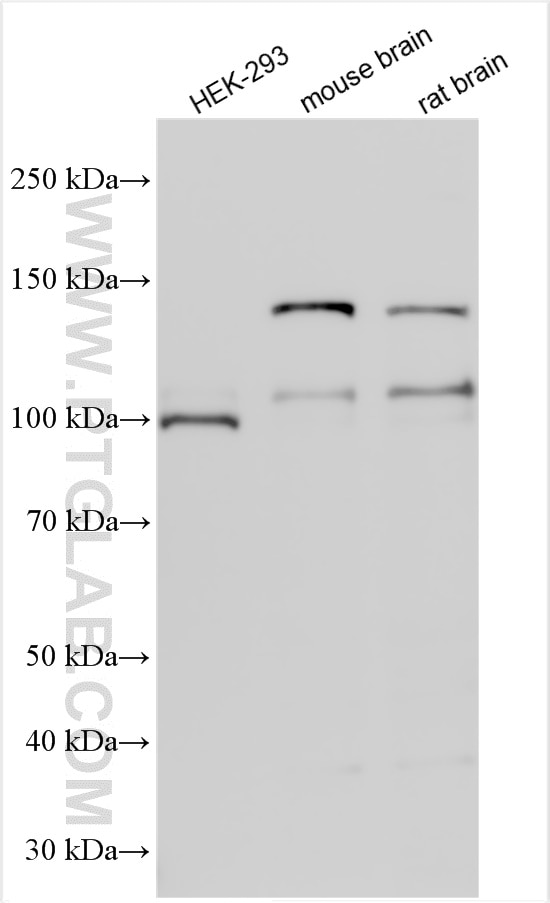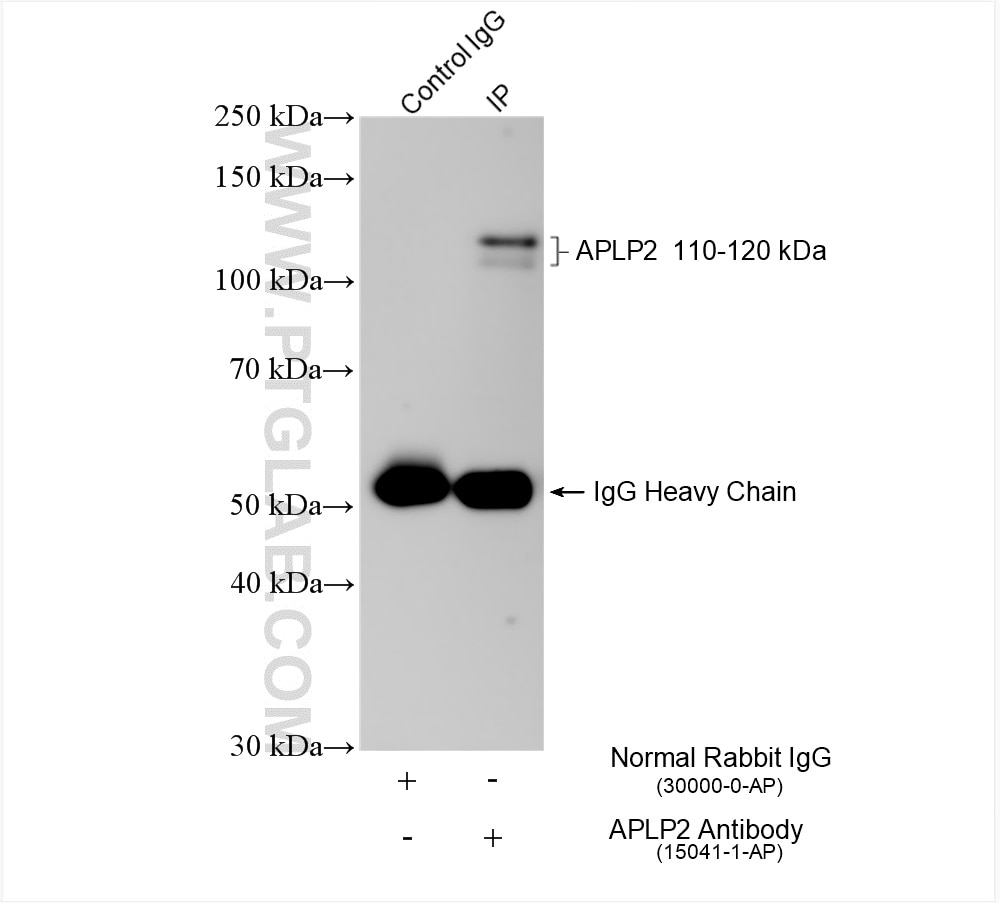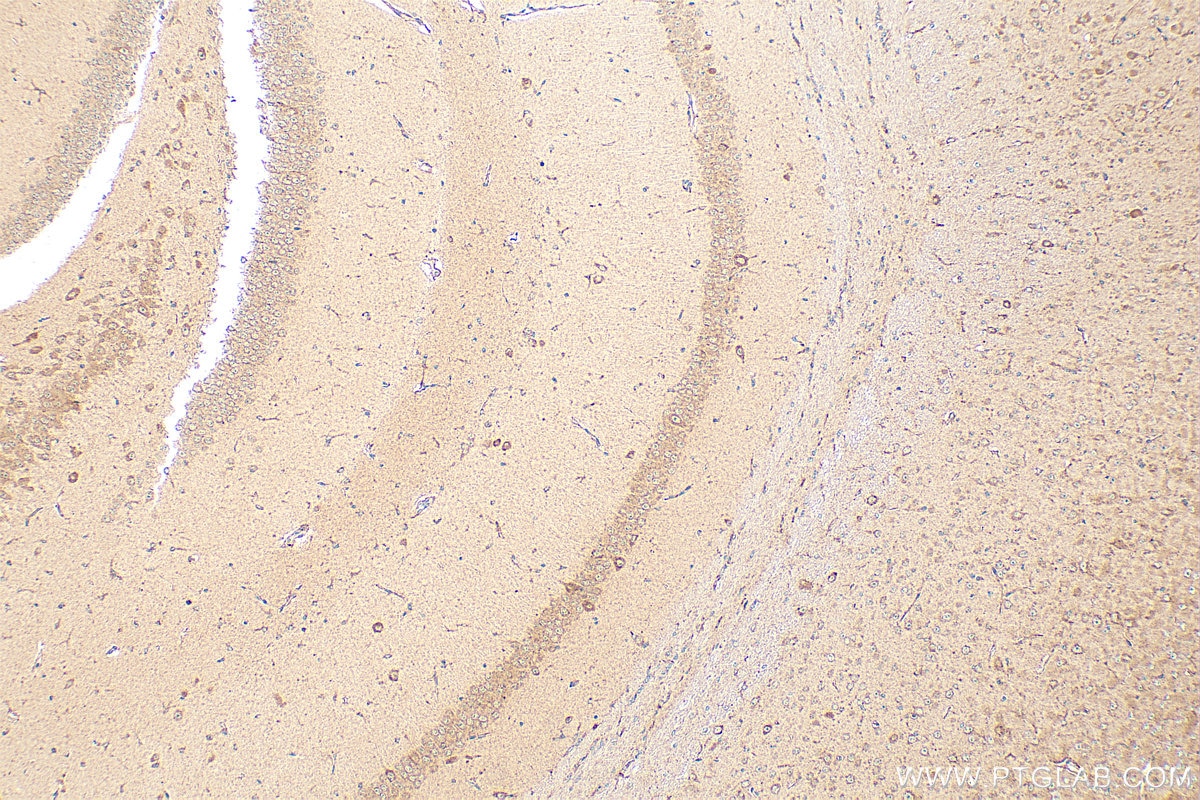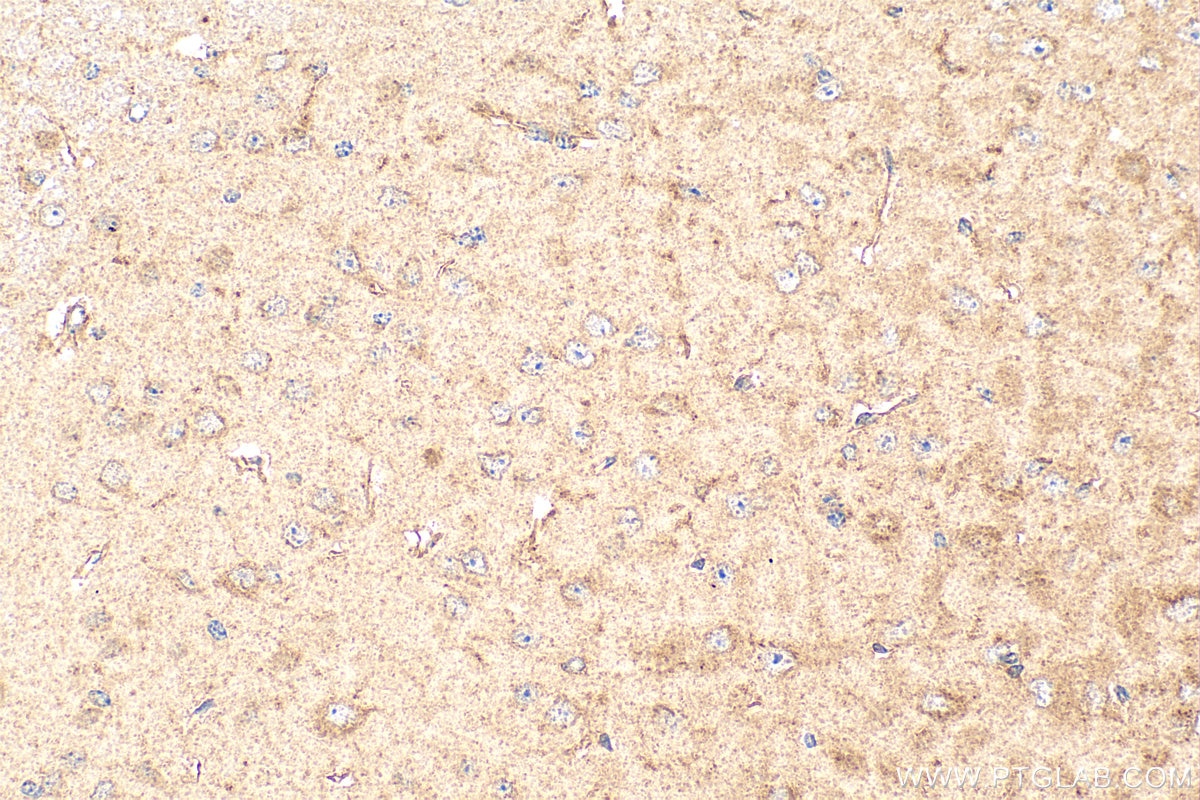Validation Data Gallery
Tested Applications
| Positive WB detected in | HEK-293 cells, mouse brain tissue, rat brain tissue |
| Positive IP detected in | mouse brain tissue |
| Positive IHC detected in | mouse brain tissue Note: suggested antigen retrieval with TE buffer pH 9.0; (*) Alternatively, antigen retrieval may be performed with citrate buffer pH 6.0 |
Recommended dilution
| Application | Dilution |
|---|---|
| Western Blot (WB) | WB : 1:500-1:1000 |
| Immunoprecipitation (IP) | IP : 0.5-4.0 ug for 1.0-3.0 mg of total protein lysate |
| Immunohistochemistry (IHC) | IHC : 1:50-1:500 |
| It is recommended that this reagent should be titrated in each testing system to obtain optimal results. | |
| Sample-dependent, Check data in validation data gallery. | |
Published Applications
| WB | See 2 publications below |
Product Information
15041-1-AP targets APLP2 in WB, IHC, IP, ELISA, PLA applications and shows reactivity with human, mouse, rat samples.
| Tested Reactivity | human, mouse, rat |
| Cited Reactivity | human, mouse |
| Host / Isotype | Rabbit / IgG |
| Class | Polyclonal |
| Type | Antibody |
| Immunogen | APLP2 fusion protein Ag6838 相同性解析による交差性が予測される生物種 |
| Full Name | amyloid beta (A4) precursor-like protein 2 |
| Calculated molecular weight | 87 kDa |
| Observed molecular weight | 120 kDa |
| GenBank accession number | BC000373 |
| Gene Symbol | APLP2 |
| Gene ID (NCBI) | 334 |
| RRID | AB_2289597 |
| Conjugate | Unconjugated |
| Form | Liquid |
| Purification Method | Antigen affinity purification |
| UNIPROT ID | Q06481 |
| Storage Buffer | PBS with 0.02% sodium azide and 50% glycerol , pH 7.3 |
| Storage Conditions | Store at -20°C. Stable for one year after shipment. Aliquoting is unnecessary for -20oC storage. |
Background Information
Amyloid precursor-like protein-2 (APLP2) is a member of the APP (amyloid precursor protein) family including APP, APLP1, and APLP2. APLP2 is ubiquitously expressed. It contains heparin-, copper- and zinc- binding domains at the N-terminus, BPTI/Kunitz inhibitor and E2 domains in the middle region, and transmembrane and intracellular domains at the C-terminus. APLP2 has been shown to regulate multiple cellular functions such as neurite outgrowth, axogenesis, corneal epithelial wound healing, cell adhesion, migration, and mitosis. The synergy of this protein and the APP is required to mediate neuromuscular transmission, spatial learning and synaptic plasticity. APLP2 has been implicated in the pathogenesis of Alzheimer's disease.
Protocols
| Product Specific Protocols | |
|---|---|
| WB protocol for APLP2 antibody 15041-1-AP | Download protocol |
| IHC protocol for APLP2 antibody 15041-1-AP | Download protocol |
| IP protocol for APLP2 antibody 15041-1-AP | Download protocol |
| Standard Protocols | |
|---|---|
| Click here to view our Standard Protocols |
Publications
| Species | Application | Title |
|---|---|---|
iScience Using brain cell-type-specific protein interactomes to interpret neurodevelopmental genetic signals in schizophrenia | ||
Life Sci Alliance Quantitative proteomics identifies PTP1B as modulator of B cell antigen receptor signaling. | ||
Heliyon HMGA2 overexpression activates IGF2BP2 to stabilize APLP2 via m6A modification and promote pancreatic cancer progression |



